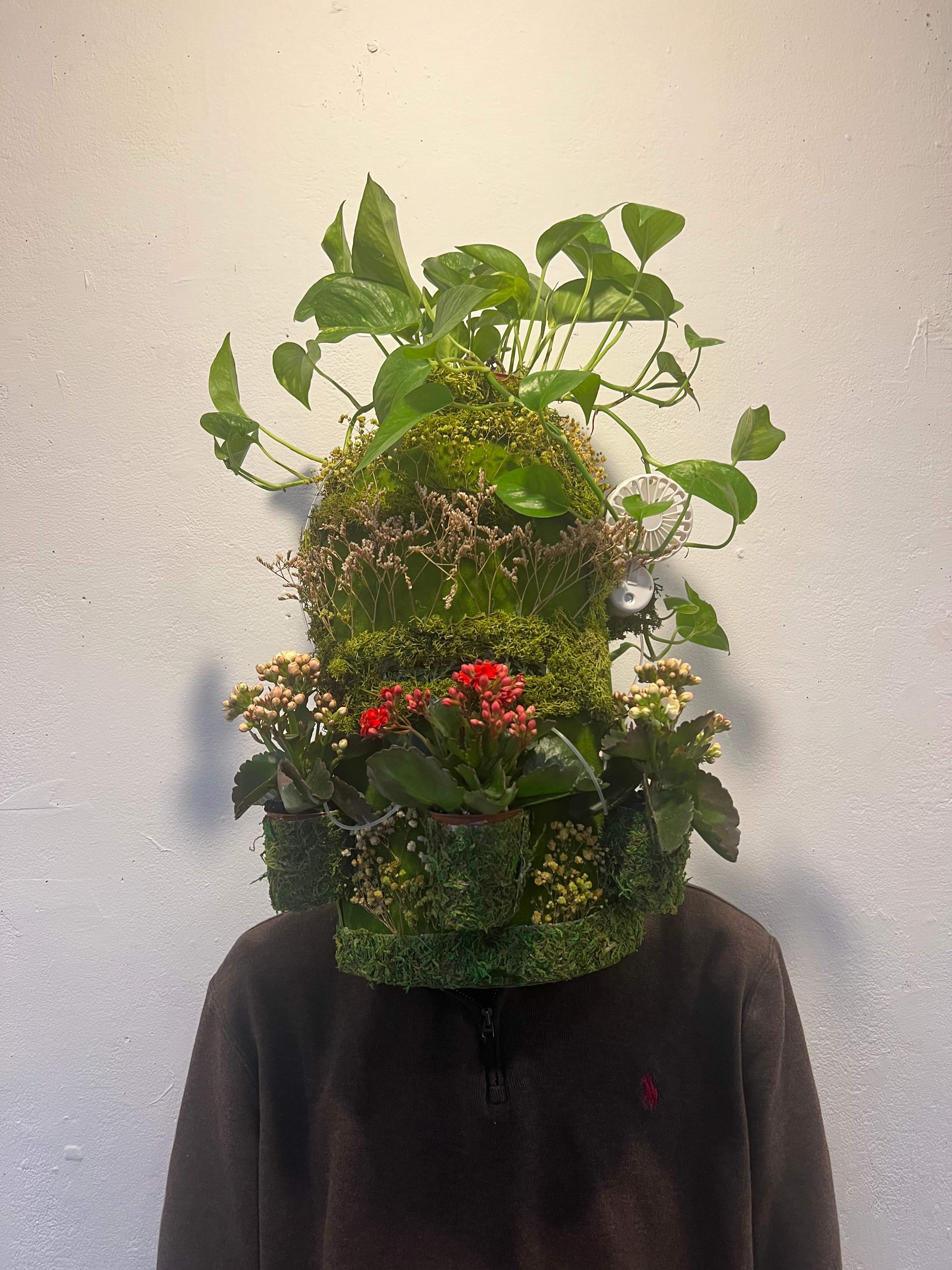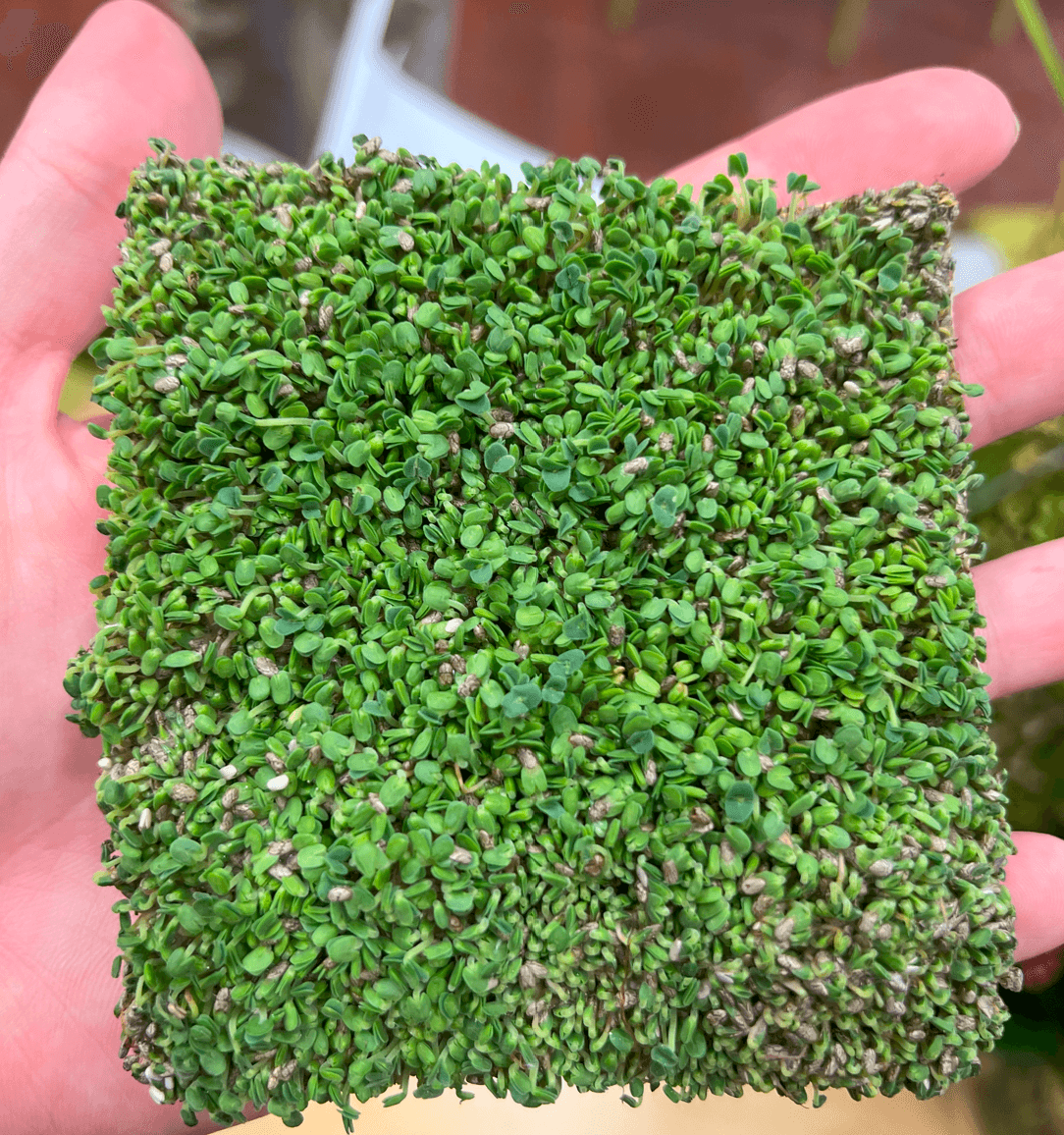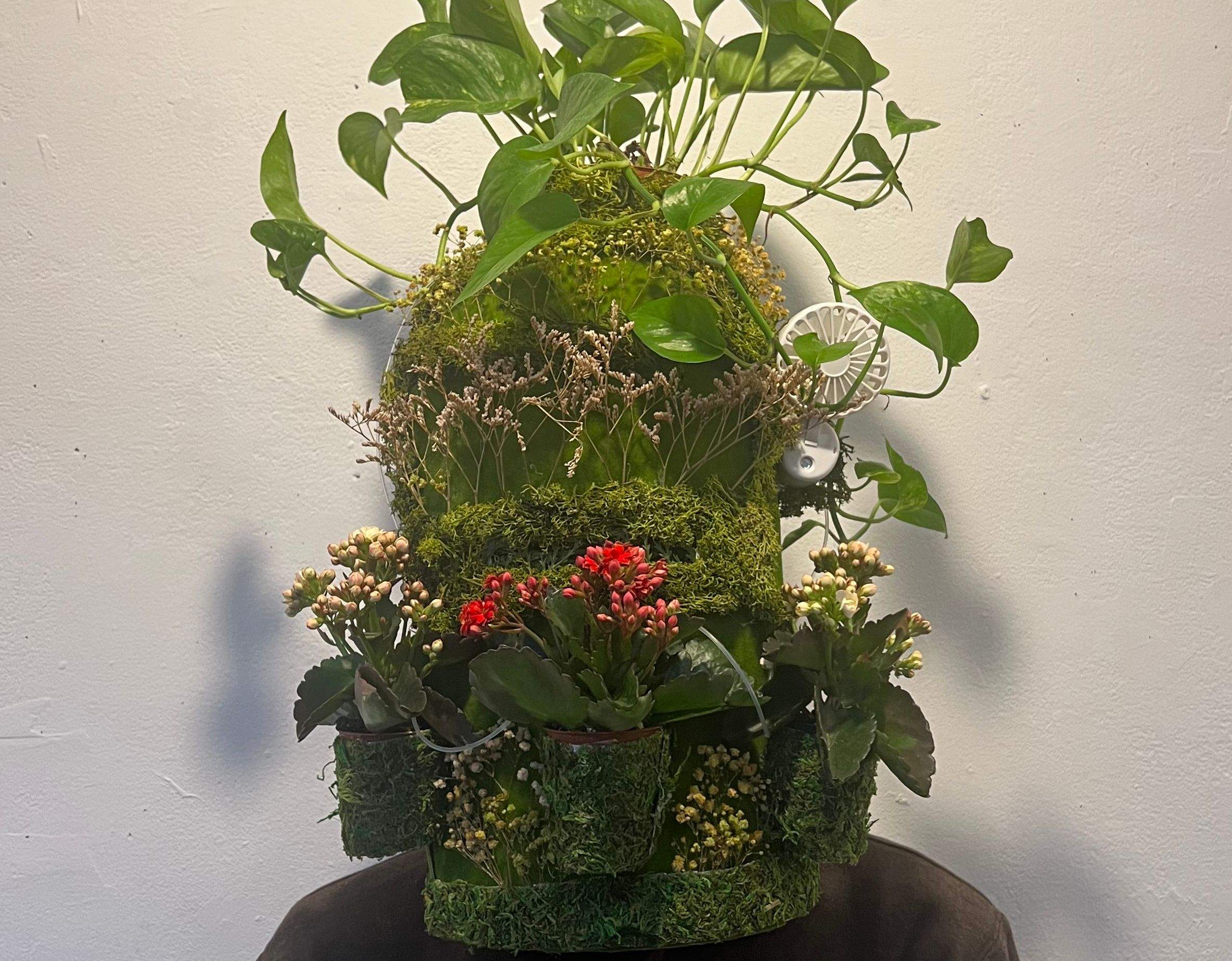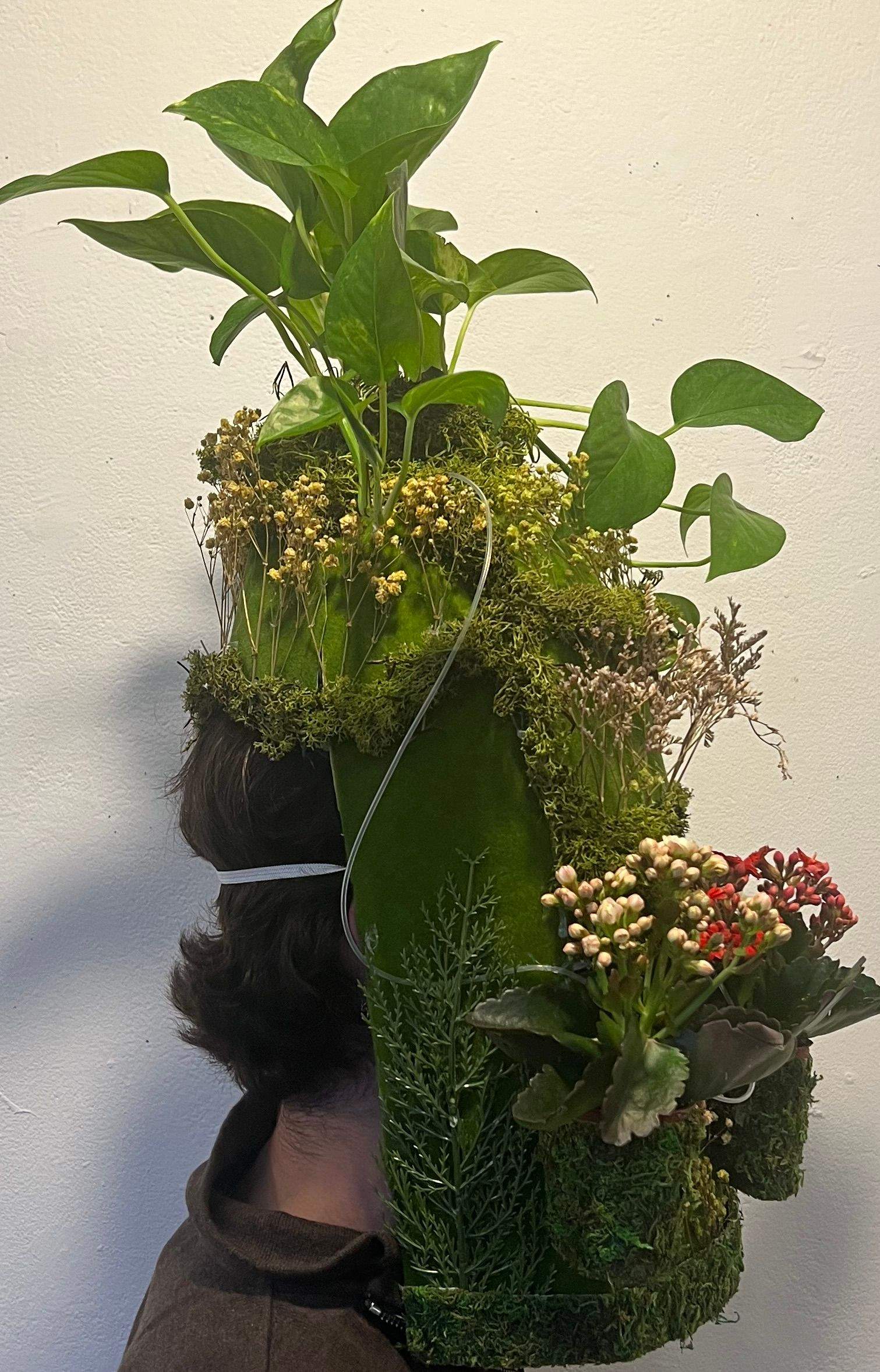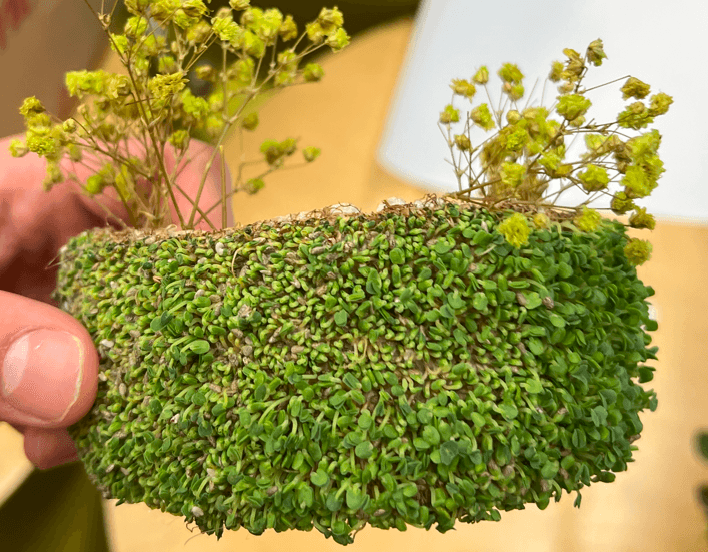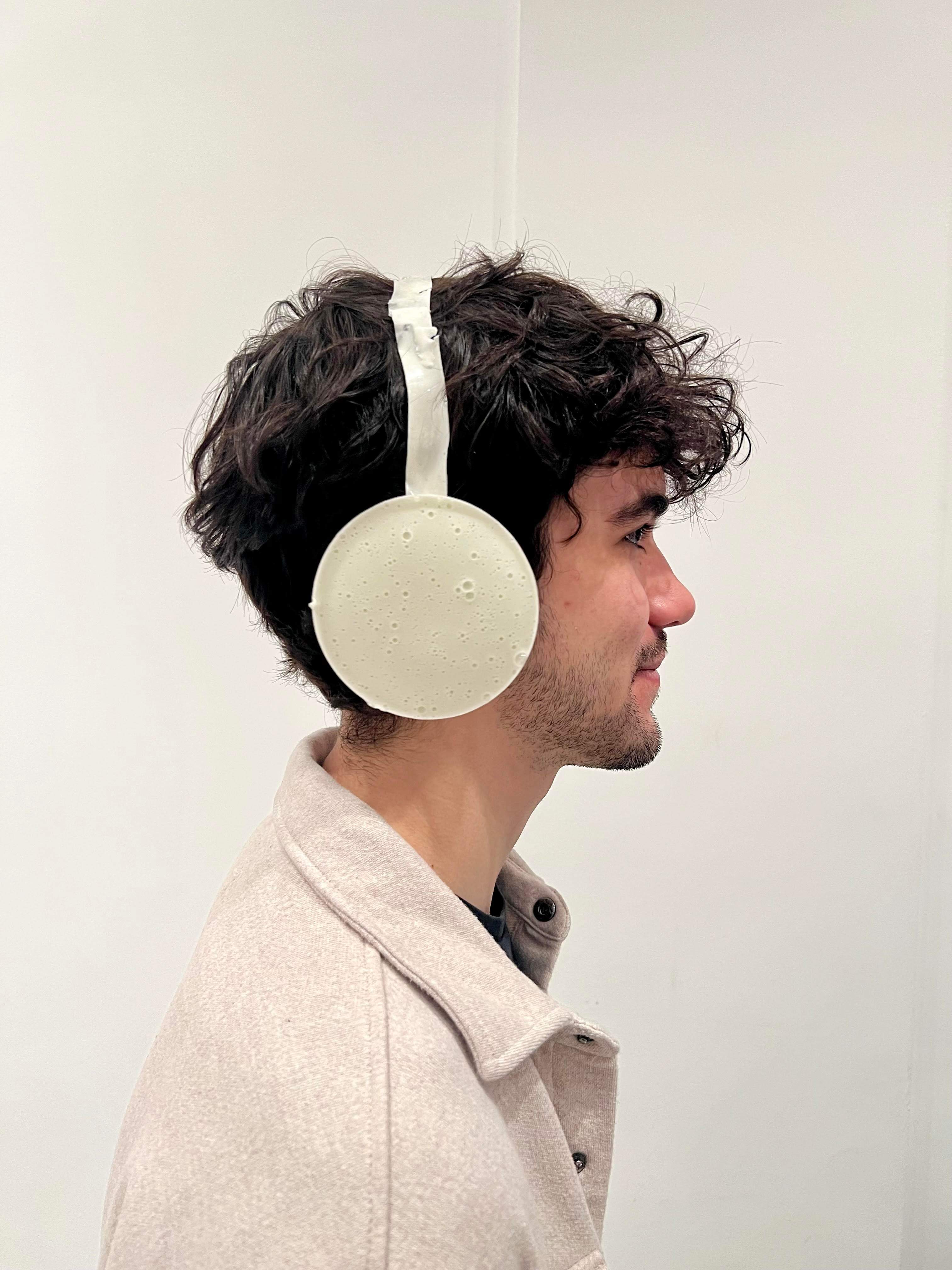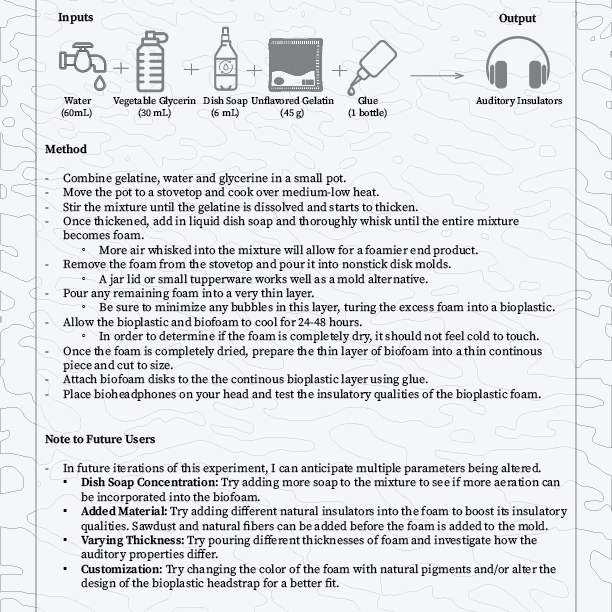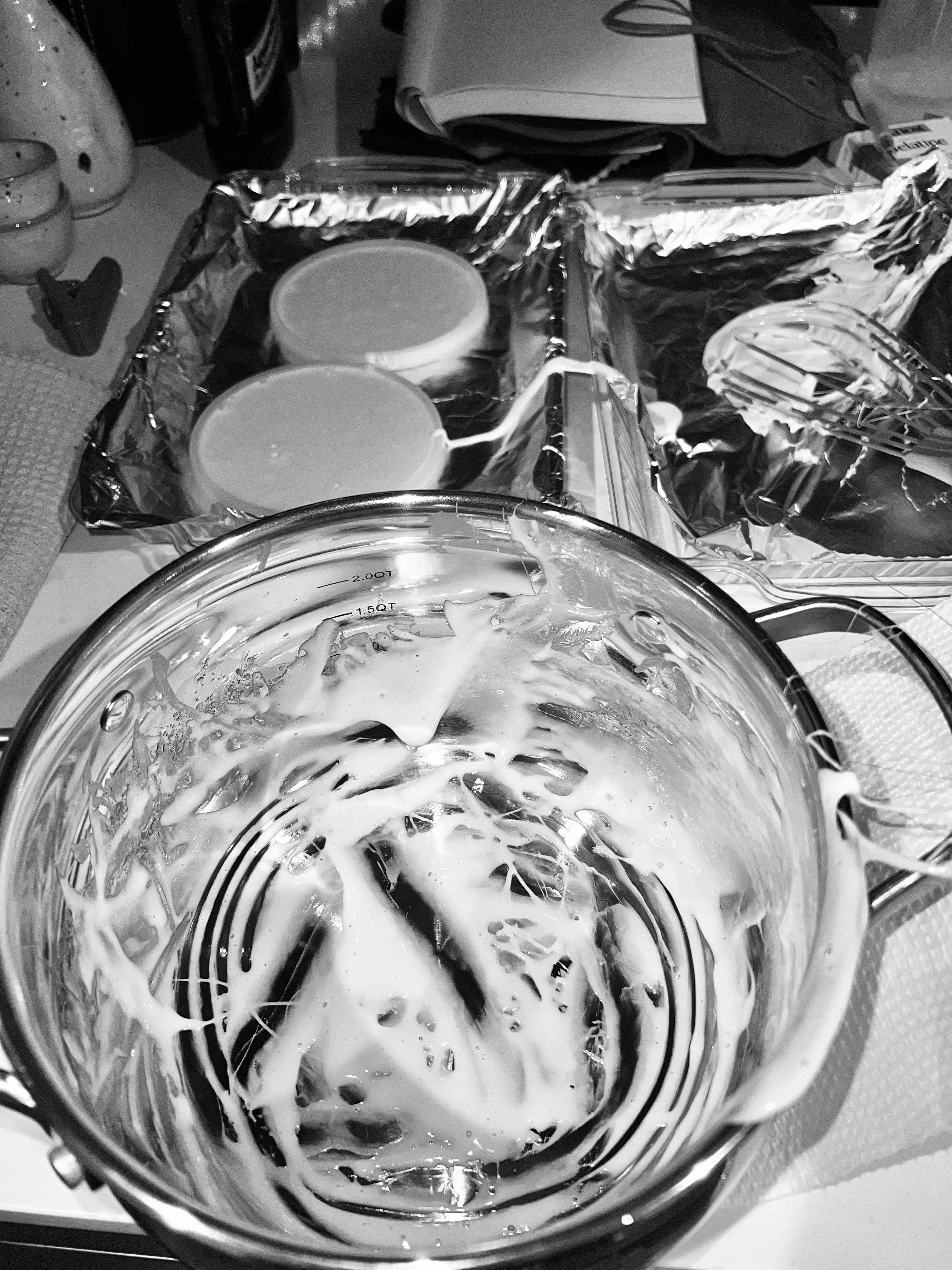Material Investigations
Portable Green Space
Commentary on New York City's Shortage of Green Spaces
As the city shifts from day to night, urban green spaces become inaccessible, if they exist at all. The status quo leaves only those privileged enough to enjoy rooftop gardens with access to nature, although limited and artificially constructed nonetheless. My work challenges this harsh reality, acting as both a shield from urbanization and a portable ecosystem.
Course | Core I Architecture Studio |
Date | 2024 |
Instructor | Kevin Hai Pham |
Since the city does not provide adequate green spaces, I will reclaim nature on my own terms.
This wearable ecosystem is self-sufficient, and actively filters carbon dioxide from the air while attracting local pollinators. This work is a personal sanctuary - a space that defies the ultra-constructed environment around me. It is not just a personal escape; it brings to the forefront a glimpse of what nature in the city could be.
Chia-Based Biofabric
Material Investigation for a Living Fabric
Bioplastic Auditory Insulation
Material Investigation for Auditory Insulation Foam Alternative
This bioplastic is an experimental material designed as a potential replacement for traditional auditory insulation. Made from a mixture of gelatin, glycerin, and dish soap, the material can be tailored to achieve different densities and textures by adjusting the ingredient ratios. Its composition allows it to effectively absorb and dampen sound, making it a promising alternative for sustainable insulation.
Beyond auditory applications, one of the material's key advantages is its reusability—when heated, the bioplastic softens and can be re-melted, repoured, and reshaped into new configurations, making it a versatile and waste-conscious option for various design considerations.
Course | Architectural Drawing and Representation II |
Date | 2025 |
Instructor | Lorenzo Villaggi |

